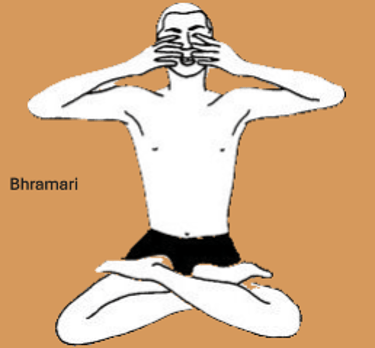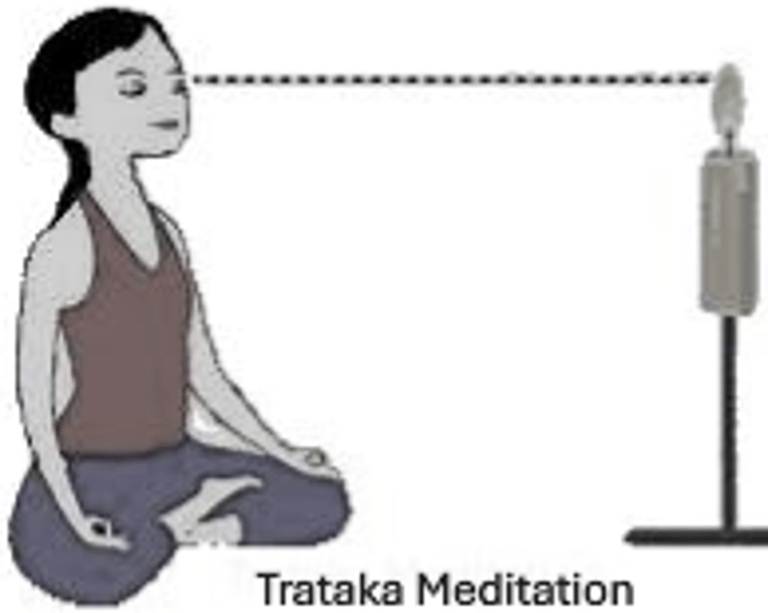Yoga for Focus and Learning
edubeatsworld.com


["This page contains affiliate links. If you purchase through these links, I may earn a small commission at no extra cost to you. Learn more."]
In today's fast-paced world, students and educators face numerous challenges in maintaining concentration and mental clarity. The constant buzz of digital distractions and the mounting pressures of academic and personal responsibilities make the ability to focus a prized skill. 'Yoga', an ancient practice with modern relevance, offers powerful tools to enhance concentration and facilitate effective learning. Through a combination of physical postures, breathing exercises, and mindfulness techniques, yoga can create a balanced and receptive state of mind, which is essential for academic success and personal growth.
Why Focus is Crucial for Learning
Focus is the bedrock of effective learning. When students concentrate, they absorb, process, and retain information more efficiently. In contrast, distractions and scattered thoughts impede comprehension and diminish productivity. Developing focus transcends academic performance; it fosters vital life skills such as problem-solving, critical thinking, and emotional resilience. Yoga offers a holistic approach to achieving these benefits by nurturing the mind-body connection.
How Yoga Enhances Focus
Yoga enhances focus by calming the mind, improving physical health, and fostering mindfulness. The combination of controlled breathing '(pranayama)', physical poses '(asanas)', and meditation techniques creates an environment that promotes learning and mental clarity.
Here are some ways that yoga benefits focus and learning:
1. Reduces Stress: Stress and anxiety are significant barriers to concentration. By lowering cortisol levels, yoga helps individuals remain calm and centered.
2. Boosts Energy Levels: Fatigue can lead to lapses in focus. Yoga revitalizes both the body and mind, ensuring sustained attention.
3. Improves Blood Circulation: Enhanced blood flow to the brain supports cognitive functions such as memory and concentration.
4. Promotes Mindfulness: Yoga encourages living in the present moment, effectively reducing distractions from worries about the past or future.
Acknowledgments: We thank all contributors for the yoga images featured on this site.




Effective Yoga Techniques for Focus and Learning
Here are specific Yoga practices that can help improve focus and learning:
1. Breathing Exercises (Pranayama)
Pranayama is the practice of breath control that positively influences both the mind and body. As a cornerstone of yoga, it directly enhances focus by calming the nervous system and sharpening awareness.
Nadi Shodhana (Alternate Nostril Breathing):
Technique: Sit in a comfortable position. Close your right nostril with your thumb, inhale through the left nostril, then close the left nostril and exhale through the right nostril. Repeat this process, alternating between nostrils.
Benefits: This technique balances the left and right hemispheres of the brain, promotes mental clarity, and reduces stress.
Bhramari (Bee Breath):
Technique: Close your eyes and ears using your thumbs and fingers. Inhale deeply, then exhale while making a humming sound similar to that of a bee.
Benefits: This technique calms the mind, reduces anxiety, and enhances focus.
Kapalabhati (Skull Shining Breath):
Technique: Sit comfortably and take a deep breath. Exhale forcefully through your nose while drawing your belly inward. Repeat this for 20 to 30 breaths.
Benefits: This technique improves oxygen supply to the brain, energizes the body, and sharpens concentration.








2. Yoga Poses (Asanas)
Certain yoga poses (Asanas) are especially effective at enhancing focus by stimulating the brain and promoting balance.
· Technique: Stand tall and shift your weight onto one leg. Place the sole of the opposite foot against your inner thigh or calf (avoiding the knee). Bring your hands together in a prayer position at your chest or extend them overhead.
· Benefits: This pose improves balance, strengthens concentration, and fosters mental stability.
Eagle Pose (Garudasana):
· Technique: Stand straight, bend your knees slightly, and cross one leg over the other. Wrap one arm under the other and join your palms. Focus on a point in front of you.
· Benefits: This pose enhances balance, coordination, and mental focus.
Child's Pose (Balasana):
· Technique: Kneel on the floor, sit back on your heels, and stretch your arms forward while lowering your forehead to the ground.
· Benefits: This pose relieves stress, calms the mind, and promotes introspection.
Seated Forward Bend (Paschimottanasana):
· Technique: Sit with your legs extended forward. Inhale and raise your arms, then exhale and reach for your feet while keeping your back straight.
· Benefits: This pose soothes the nervous system and enhances mental clarity.


3. Meditation Practices
Meditation trains the mind to remain present and focused. Regular practice fosters better self-awareness and cognitive control.
· Technique: Sit comfortably and close your eyes. Focus on your breath or a single thought, gently bringing your attention back whenever it wanders.
· Benefits: This practice improves attention span and reduces mental distractions.
· Technique: Light a candle and place it at eye level. Gaze at the flame without blinking for as long as possible, then close your eyes and visualize the flame.
· Benefits: This practice strengthens concentration, enhances visual focus, and calms the mind.

4. Relaxation Techniques
Relaxation is essential for maintaining focus and reducing mental fatigue.
Shavasana (Corpse Pose):
· Technique: Lie on your back with your arms relaxed by your sides. Close your eyes and consciously relax each part of your body.
· Benefits: This practice restores energy, calms the nervous system, and prepares the mind for focused tasks.
Yoga Nidra (Yogic Sleep):
· Technique: Lie down comfortably and follow guided instructions to relax each part of your body while staying aware.
· Benefits: This practice relieves stress, improves memory, and enhances cognitive functions.


Creating a Routine for Focus and Learning
To experience the benefits of Yoga, consistency is key.
Here’s a simple routine:
Morning Session:
Start with Kapalabhati for 5 minutes to energize the body.
Practice Nadi Shodhana for 5 minutes to center the mind.
Perform Vrikshasana and Garudasana to boost balance and focus.
Midday Break:
Practice Balasana for 3-5 minutes to relieve stress.
Engage in Mindfulness meditation for 10 minutes.
Evening Session:
Do Shavasana or Yoga Nidra for 10-15 minutes to relax and reset the mind.
End with Trataka for enhanced visual focus.
'Integrating Yoga into Educational Settings'
Yoga can be seamlessly integrated into schools and educational institutions. Short yoga sessions before or after classes can help students reset their minds and enhance focus. Additionally, educators can lead by example by practicing yoga themselves and sharing its benefits..
Classroom Practices: Simple breathing exercises like Bhramari can be conducted during breaks to help students refocus.
Workshops: Schools can organize Yoga workshops to educate students and teachers about its benefits for learning.
Conclusion
Yoga is a time-tested practice that offers a comprehensive approach to enhancing focus and learning. By incorporating breathing exercises, physical postures, and meditation into daily routines, students and educators can unlock their full potential. As distractions and challenges grow in today’s educational landscape, yoga serves as a powerful antidote, fostering not only academic success but also mental and emotional well-being. Embrace yoga to cultivate a focused, mindful, and empowered approach to learning and life.
RELATED POSTS
contact@edubeatsworld.com
© 2024. All rights reserved.
